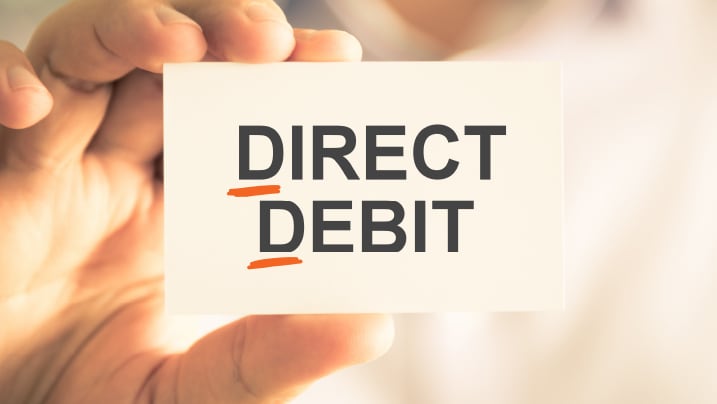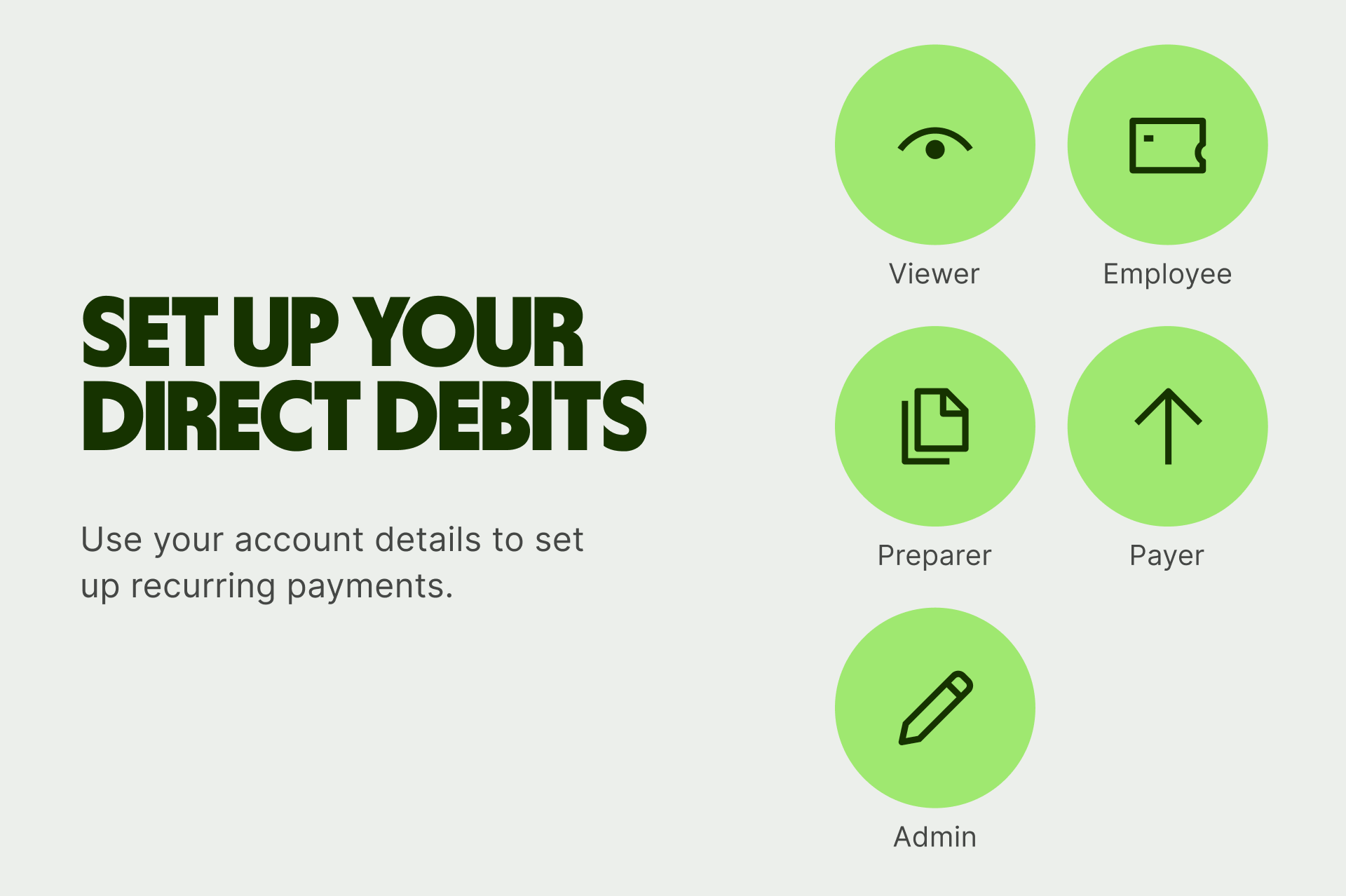In the modern digital economy, direct debit is the go-to method of collecting periodic payments. Whether monthly subscription, utility bill, or insurance premium, millions of transactions move quietly from bank accounts through this safe and mechanized payment channel. Yet for businesses and consumers alike, it’s worthwhile to know about the related direct debit fees what they are, how they operate, and how to deal with them efficiently.

What Is a Direct Debit?
Now that we’ve gotten that cleared up, let’s quickly touch on what a direct debit is. A direct debit is a permission granted to a business to take money straight from a customer’s bank account, either on a regular or a single basis. While standing orders (which the payer sets up and has control over) are initiated by the payer, direct debits are activated by the business (payee) and can change in terms of amount and frequency perfect for variable bills or subscriptions.
Direct Debit Fee Structure
Direct debit fees can differ substantially by geography, provider, volume, and type of infrastructure used. Below is a summary of the principal categories:
Setup Fees
Certain direct debit providers have an initial setup fee to sign up a business. This could encompass:
- Account verification
- Setup for accounting or billing software (e.g., Xero, QuickBooks)
- API access or sandbox testing environments
- KYC (Know Your Customer) compliance checks
These charges may be between $0 and $500 based on provider and business complexity.
Transaction Fees
This is the most prevalent direct debit charge. It is the fee charged for each successful payment made. These charges are usually:
- Flat-rate: e.g., $0.30 per transaction
- Tiered: reduced fees for high-volume merchants
- Percentage-based in certain areas, though this is uncommon
For instance, GoCardless might charge a customer about 1% of a transaction in a particular market with a limit for a fixed fee (say $2).
Platform fees per month
Most vendors opt for SaaS-type subscription based on monthly or yearly fees. These might fall between $10 for lower-grade plans to some hundreds of dollars for corporate editions with additional functionality such as:
- Real-time insights
- White-labeling
- Customer support specifically designated
- Support of multiple currencies
Fee for failed payment
If a payment is declined because of low funds, closed accounts, or inaccurate information suppliers charge a failed payment fee. This may be:
- A fixed amount for each failure (e.g., $1–$5)
- A charge for retrying the payment
- An admin fee if there needs to be manual intervention
Some suppliers automatically retry failed payments several times, enhancing collection success rates.
Chargeback or Indemnity Fees
In nations such as the UK, the Direct Debit Guarantee provides consumers with the right to demand an instant refund for any unauthorized or mistaken payment. This may initiate an indemnity claim, and while the customer receives a refund from their bank immediately, the company can encounter:
- A chargeback fee (e.g., £5–£25)
- Being required to demonstrate the legitimacy of the payment
- Emporary cash flow disruption
Additional Fees
Depending on your provider or bank, you might also encounter:
- Reporting or reconciliation fees
- Currency conversion charges for international transactions
- Premium support fees or integration consultation
Who Pays Direct Debit Fees?
The business (merchant) usually pays most direct debit fees. It’s a business expense, similar to credit card processing or invoicing software. But some businesses transfer these fees to customers by:
- Applying a small surcharge (if it is legally allowed)
- Providing a discount for non-direct debit options
- Including it as part of the price of the product or service
- For customers, charges are usually uncommon, but can be incurred in certain instances such as:
- Charges for overdraft by their bank if they don’t have sufficient funds
- Return payment charges if a payment is bounced
- Admin charges from the merchant if a payment is repeatedly declined
Regional Variations in Direct Debit Systems

United Kingdom – Bacs
- Utilizes the Bacs system for regular payments, Faster Payments for one-offs
- Direct Debit Guarantee safeguards consumers
- Low costs, high dependability
- GoCardless, London & Zurich, and AccessPay are well-known providers
Europe – SEPA
- The Single Euro Payments Area (SEPA) enables cross-border euro payments among EU member states
- Banks impose SEPA direct debit fees, typically €0.35–€0.50 per transaction
- Requires strict mandate management and SEPA adherence
United States – ACH Network
- ACH (Automated Clearing House) is the main infrastructure
- Providers such as Stripe, Dwolla, and Plaid enable bank debits
- NACHA rules apply to consumer protections
- Settlement time: generally 1–2 business days
Australia – BECS
- Bank debit system by the name of Bulk Electronic Clearing System (BECS)
- Operated by the Australian Payments Network
- Fees comparable to other markets, generally $0.25–$1.00 per transaction
Advantages of Direct Debit Regardless of the Charges
Why do businesses opt for direct debit, even with the charges?
- Reduced Processing Charges: Direct debit is significantly cheaper compared to credit cards (2%–3.5%).
- Cash Flow Predictability: With automated collection, companies can better predict income.
- Customer Retention: Less failed payments = less churn for subscription services.
- Less Administrative Work: No chasing invoices, dealing with late payments, or reconciling data manually.
- Better Customer Experience: Once authorized, customers don’t have to do anything. Payments just occur.
Comparing Direct Debit Fees to Other Payment Methods
Payment Method | Average Fees | Ideal Use Case |
Direct Debit | $0.20 – $1.50 | Recurring billing, memberships |
Credit Cards | 2.9% + $0.30 | One-time purchases |
Bank Transfers | Often free | Large B2B payments |
PayPal | 2.9% + fee | Small online purchases |
How to Minimize Your Direct Debit Charges?
If you’re a business seeking to maximize your payment stack, here are some useful tips:
- Negotiate With Providers: High-volume traders usually get bespoke pricing don’t accept default plans.
- Batch Transactions: Certain banks charge less per transaction if payments are made in batches.
- Utilize Automated Retry Logic: Failed payments can usually be recovered if retried in a strategic manner — on payday, for example.
- Don’t Do Manual Admin: Select providers that automate reconciliation and provide dashboards for monitoring.
- Take Advantage of Multi-Currency Accounts: If you bill overseas, use local accounts to minimize FX and cross-border fees.
Case Example: SaaS Business Using Direct Debit
Suppose a SaaS business charges 5,000 customers each month at $29. Their choices:

- Credit Cards at 2.9% = $4,205 in fees/month
- Direct Debit at $0.40 per txn = $2,000 in fees/month
- That’s more than a $2,000 monthly saving, not to mention reduced failed payments and less churn from expired cards.
Things to Watch Out For
- Direct Debit Fraud: Make sure to authenticate customers prior to allowing auto-debit.
- Customer Disputes: Store signed or electronic mandates as proof of authorization in all cases.
- Regulatory Compliance: Various jurisdictions have stringent regulations (GDPR in EU, NACHA in US).s, pulvinar dapibus leo.
Final Thoughts
Direct debit charges might appear to be a minor day-to-day operation, but they can make a big difference to your bottom line. Selecting the right supplier, knowing the real cost per transaction, and creating systems to reduce failed payments can pay big dividends for your business. For customers, direct debit is unparalleled convenience but you should still keep an eye on your bank account and know your rights if things go wrong. If you’re growing a subscription business, dealing with property payments, or operating a utility company, having a grasp of the subtleties of direct debit charges will allow you to develop a more efficient, smoother, and more predictable billing process.
FAQs
What are the fees for Direct Debit Systems?
Fees for Direct Debit Systems are the costs incurred by businesses when they take money from a customer’s bank account through a direct debit agreement. These may cover direct debit transaction charges, initiation fees, service fees, bank charges, and fees for unsuccessful payments.
Does the business or the customer pay the charges for Direct Debit Systems?
Usually, companies take most direct debit fees as part of the cost of doing business. Others may charge back to the customer costs such as direct debit cancellation charges, late payment charges, or return charges according to their direct debit fee policy.
What is the typical cost of direct debit processing?
The direct debit processing fees vary between $0.20 and $1.50 per transaction, depending on the provider, location, and volume. Some providers provide a direct debit fee calculator to approximate costs based on usage.
Are there any indirect direct debit service charges I should know about?
Yes, apart from normal direct debit service charges, some providers may charge:
- Direct debit administration charges
- Mandate management fees
- Indemnity claim charges Always examine the provider’s direct debit fee disclosure closely.
What if a direct debit payment doesn’t go through?
If a payment doesn’t go through, you might be charged:
- A direct debit return fee
- A direct debit failure charge
- A late payment charge (if the customer is in error) Some providers implement retry logic to exclude or reduce these fees.
What is a Direct Debit Systems indemnity claim charge?
When a customer contests a transaction under the Direct Debit Guarantee, companies can be charged direct debit indemnity claim fees and have to refund the entire amount. This can affect cash flow and result in further direct debit dispute fees.
Are there varying fees between direct debit and standing orders?
Yes, With standing orders, the payer has control of the amount and timing and there are typically no provider charges. With direct debit, the business makes the payments and incurs direct debit charges. Therefore, comparing direct debit vs standing order charges is important in determining the method to use.
Are direct debit charges refundable or waivable?
In certain instances, yes. Large-volume companies are eligible for a direct debit fee waiver or tailored pricing. In the event you’ve been charged more than you should have been, you’re also entitled to a direct debit fee refund or submit a direct debit fee query to the provider.
What is the consumer direct debit refund policy?
The majority of areas boast a customer-oriented direct debit refund policy. As an example, through the Direct Debit Guarantee in the UK, consumers have the right to ask for a prompt refund on any mistaken or unauthorized debit.
Where can I obtain a fair provider with open direct debit fee terms?
Search for providers who:
- Clearly describe their direct debit fee terms
- Provide a comprehensive breakdown of direct debit fees
- Set out direct debit processing fee rules and conditions on the web
- Give prompt direct debit fee notifications and updates
Are direct debit fees regulated?
Yes. Varying nations have payment institutions and legislation that mandate direct debit processing fee regulation, including:
- NACHA in the United States
- Bacs in the United Kingdom
- SEPA in Europe These regulations typically mandate direct debit fee transparency and adherence to fair billing practices.
What is a direct debit processing authorization fee?
This is the expense of establishing or confirming a customer’s agreement to debit their account. Direct debit authorization charges are occasionally included within setup fees or mandate fees.
